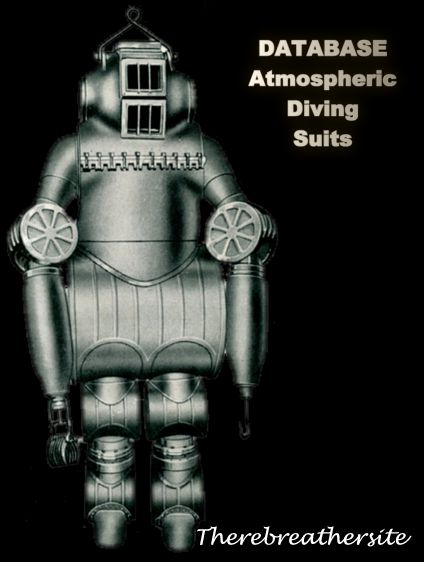
In 1863, the American, T. Cato McKeen, added a large back-mounted air reservoir and fabricated a rubber suit. A ingenious part of McKeen’s apparatus was the addition of a second air system to inflate the suit and bring the diver to the surface. Some people describes this as the forerunner of the modern buoyancy compensator. The system was used in many ADS designs.
McKeen a North American from the county of “chautaugua” in the state of New York had two patents. The first U.S Patent 40114 of 1863 describes a diving armour with two inflatable balloons. In this patent the armour itself consists of a rubber suit and has not yet much to do with atmospheric diving suits. His next patent from 1867; U.S. Patent 65760 describes the air container integrated in the suit. The integrated container of bronze is filled with 60 bar compressed “fresh air”. Therefore McKeen did not actually made a atmospheric diving suit but used the tank itself for protection against the water pressure at great depths.


The two pictures above show the diving armour with two inflatable balloons.

Figure 1 represents a side elevation of the apparatus as worn upon the diver, with the air-reservoir and buoys worn upon the outside of the dress

Figure 2 represents the same without the air-reservir, or outer rubber or other covering of the dress, and shows the hoops or rings with which the apparatus is provided to protect the diver from the pressure of the water at great depths.

Figure 3 represents a side elevation of the apparatus as worn by the diver, with the air reservoir inside the dress, and without the rubber or covering of the dress.

Figure 4 represents a rear elevation of the pantaloons as provided with hoops or rings for protection at great depths.

Figure V represents a side view of the chest or body-armor, worn below the helmet and above the pantaloons. The water-proof clothing or dress would cover this. In all the figures the same letters represent the same parts. In 1860 McKeen invented a system to buoy ships a patented his invention. The U.S Patent 26856 can be found here.


Therebreathersite was founded by Jan Willem Bech in 1999. After a diving career of many years, he decided to start technical diving in 1999. He immediately noticed that at that time there was almost no website that contained the history of closed breathing systems. The start for the website led to a huge collection that offered about 1,300 pages of information until 2019. In 2019, a fresh start was made with the website now freely available online for everyone. Therebreathersite is a source of information for divers, researchers, technicians and students. I hope you enjoy browsing the content!
